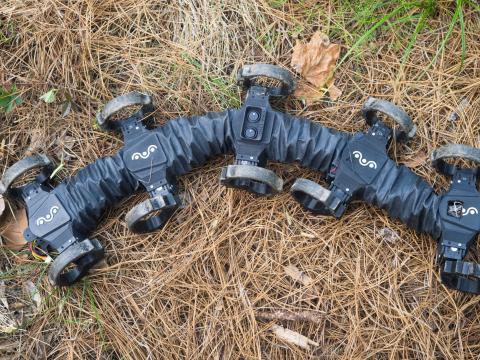RoboSubs Transform from Toys to Warfighter Tools
Systems entered in the U.S. Navy’s 17th annual RoboSub competition, held July 28-Aug. 3, are far more sophisticated than the toys that competed in the first competition, which was launched in the wake of the Sept. 11 terrorist attacks.
“In the earlier days when we first did this, the systems were considered to be some kind of toys,” says Steve Koepenick, an autonomous systems expert with the Navy’s Space and Naval Warfare Systems Center, which hosts the competition. “They are now tools. They’re part of the kit that our sailors and Marines take into theater with them. That’s reflected in the competition and the things the students are trying to do.”
The first ever competition included four teams whose systems were challenged to navigate in a straight line. Now, to complete the course, the robosubs are required to go through underwater gates, navigate a winding course, recognize different colored buoys and pick up objects.
Koepenick acknowledges battlefield robotic systems can be controversial, but he predicts their usage will become more widespread. “There are a lot of cultural issues associated with this, a lot of ethical issues, a lot of public opinion issues. You hear that every day when you hear about ‘drones’ or ‘terminator,’ but the reality is that autonomous systems are here to stay. We’re going to see more and more and greater sophistication in the autonomy as we move on.”
Cornell University took first prize—again—at this year’s competition, which marks the school’s third consecutive win. Besides the sophistication of their system, Koepenick says it was the Cornell team’s dogged preparation that won them the $10,000 prize. Cornell has been the powerhouse and are noted for getting their entire school involved. They had as many as 50 team members, and they had the vehicle in the water every week for 52 weeks, he reports. “They knew what their vehicles were capable of. They knew what their sensors were capable of. It was just a matter of adapting their sensors on that vehicle to the climactic and underwater conditions here.”
He adds that, as reigning champs, Cornell had their choice of what times to run their vehicle through the obstacle course and even considered times when sunlight was optimum.
The competition included 38 teams—the largest yet. About half of those came from other countries. Twenty-four teams made it past the qualifying round. Following Cornell, winners included the University of Florida, second place; Ecole Technologie Superieure, Montreal, Canada, third place; Far Eastern Federal University, Philippines, fourth place; and the National University of Singapore in fifth.
Besides promoting science, technology, engineering and mathematics education, Koepenick reveals that the competition has proven to be a solid career path for participating students. “Over the years, I think we’ve hired at least a dozen students. If we don’t hire them, some of our other Navy commands do, and obviously industry hires them,” Koepenick reports. “It’s a pipeline to create some talent for us.”
The Office of Naval Research (ONR) sponsors the contest along with industry partners. The military sponsors contests from grade school levels through college. “This competition represents a culmination of a student’s path in this area. If they’re interested in robotics, especially on the maritime side, it can hold a kid’s interest for a number of years,” Koepenick states.
Additionally, the Navy, arguably the most powerful Navy in the world, can learn a thing or two from the students. “We see some very innovative things come from the teams, because no one has ever told them how to approach the problem or that they can’t approach a problem in a particular way. We’ll see some very simple, low-cost approaches to things that, in many cases in the real world, can be very complicated, expensive and political.”
He adds that the competition is not open just to university-level students. “We have high school teams. We have home-schooled teams in some cases too. In addition, we might have some robotics clubs,” he says.
The Navy also will sponsor and host the October 20-26 Maritime RobotX challenge. Five countries have been invited, and each country has three teams. The difference is that all teams will be given a surface platform of the same type. ONR will provide a $25,000 catamaran.




Comments